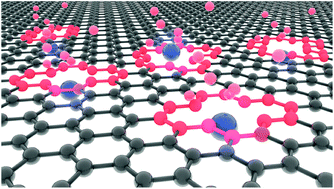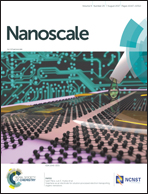Fabrication of nanoporous graphene/polymer composite membranes†
Abstract
Graphene is currently investigated as a promising membrane material in which selective pores can be created depending on the requirements of the application. However, to handle large-area nanoporous graphene a stable support material is needed. Here, we report on composite membranes consisting of large-area single layer nanoporous graphene supported by a porous polymer. The fabrication is based on ion-track nanotechnology with swift heavy ions directly creating atomic pores in the graphene lattice and damaged tracks in the polymer support. Subsequent chemical etching converts the latent ion tracks in the supporting polymer foil, here polyethylene terephthalate (PET), into open microchannels while the perfectly aligned pores in the graphene top layer remain unaffected. To avoid unintentional damage creation and delamination of the graphene layer from the substrate, the graphene is encapsulated by a protecting poly(methyl methacrylate) (PMMA) layer. By this procedure a stable composite membrane is obtained consisting of nanoporous graphene (coverage close to 100%) suspended across selfaligned track-etched microchannels in a polymer support film. Our method presents a facile way to create high quality suspended graphene of tunable pore size supported on a flexible porous polymeric support, thus enabling the development of membranes for fast and selective ultrafiltration separation processes.



 Please wait while we load your content...
Please wait while we load your content...